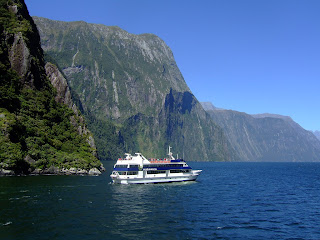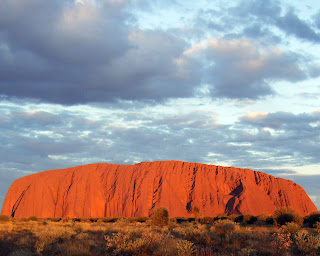Located off the northern coast of Maine and extending into Canada between New Brunswick and Nova Scotia, the natural phenomenon known as the Bay of Fundy is a 270 km (170 mile) long ocean bay that’s home to the world’s highest tides (54 feet/16m). The Bay of Fundy has a diverse ecosystem and a marine biodiversity comparable to the Amazon Rainforest. Its waters are populated with up to 12 species of whales, an abundance of dolphins, porpoises, fish, seals, seabirds and more.
 |
| (Canada) – Top things to do in Bay of Fundy |
Every day, twice a day 110 billion tonnes of seawater rush into the Bay creating phenomena that can only be experienced to be appreciated. Tides are crucial to this ecosystem and are highly respected by everyone who has seen their effect. The tide waits for no-one, and life along the Bay is dictated by the ebb and flow of water.
Below are top things to do around the Bay of Fundy:
1. Whale Watch in the Bay of Fundy
Look for the endangered North Atlantic Right Whale and 6 other species that frequent the Bay of Fundy. Many different whales can be found in the Bay of Fundy in the summer, as it is an abundant feeding ground. Minke whales are plentiful. You can also find humpbacks, fin whales, and the occasional blue whale. There are also seals and many types of sea birds in the Bay.
| (Canada) - Whale Watch in the Bay of Fundy |
2. Walk on the ocean floor
 |
| (Canada) - Bay of Fundy - Walk on the ocean floor |
Walk on the ocean floor and explore the tidal pools where the highest tides in the world have been recorded. Although many places claim to have the highest tides in the world, tides at Burntcoat Head are actually the highest, averaging 55.8', with the highest being set during the 1869 Saxby Gale at 70.9'
 |
| (Canada) - Bay of Fundy - Walk on the ocean floor |
Visit Hopewell Rocks, located on the New Brunswick side of the Bay of Fundy. At low tide, explore quiet coves with flowerpot-shaped rock formations bearing such curious names as 'Mother-in-Law', 'ET' and 'Lover's Arch'.
 |
| (Canada) - Bay of Fundy - Walk on the ocean floor |
3. Cape d’Or
With rugged red-colored vertical cliffs on either side and sparkling water stretching out as far as the eye can see Cape d'Or bears testimony to the awesome power of nature. It has the distinction of being the only place in the world where three tides converge, meeting simultaneously to create violent riptides-a phenomenon known as the Dory Rips. The lookout platform affords views of Cape Split and Ile Haute Island.
 |
| (Canada) - Bay of Fundy - Cape D'Or Lighthouse |
4. Tidal Bore Rafting
At first, the Shubenacadie River seems like a very lazy river. Situated amid 200-foot-high gypsum cliffs, it starts out as a relaxing paddle past mudflats and sandbars until you reach the mouth of the river, where the tides from the Bay of Fundy come rushing in. Suddenly, you're white-water rafting on the world's highest tides, which travel inland at roughly 50 km an hour and stir up sixteen-foot waves.
 |
| (Canada) - Bay of Fundy - Tidal Bore Rafting |
5. Hall’s Harbour
Hall's Harbour is a fishing port that works to the ever changing rhythm of the 40 foot Fundy tides. Snugly settled in its picturesque cove, and guarded on each side by tall basalt cliffs, the harbour's inner basin fills twice a day to the top of the towering wharves. Six hours later the water recedes far out into the Bay of Fundy leaving the colourful fleet of vessels dry on the harbour floor. Beach comb for treasures and watch the landscape change as the tide comes and goes.
 |
| (Canada) - Bay of Fundy - Hall’s Harbour |
(solotravelerblog.com, bayoffundyfuntours.com, en.wikipedia.org)










